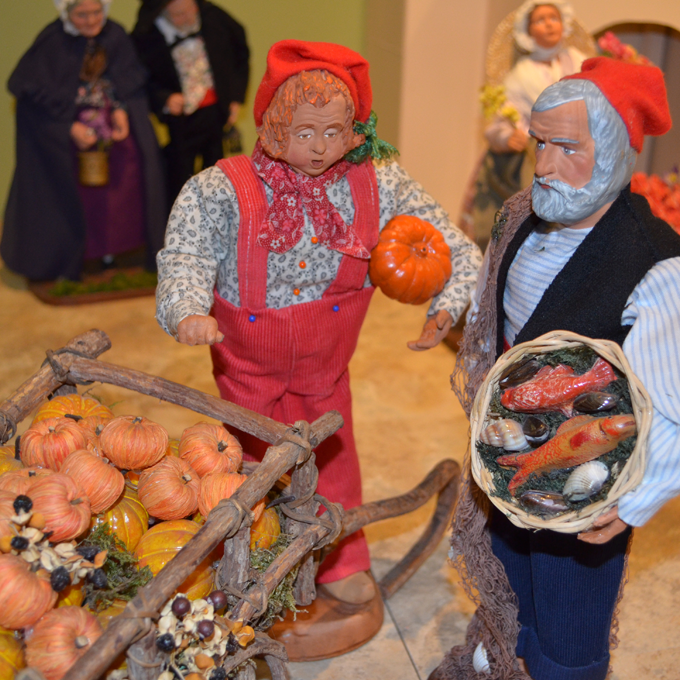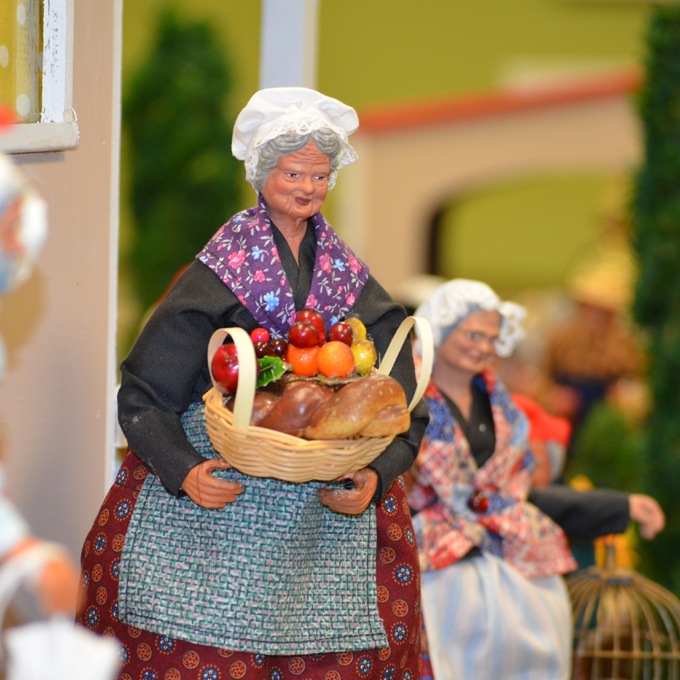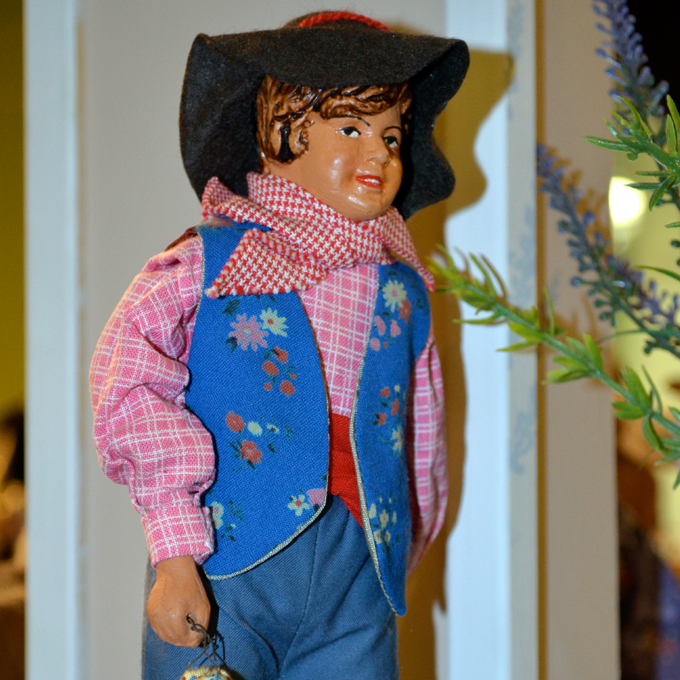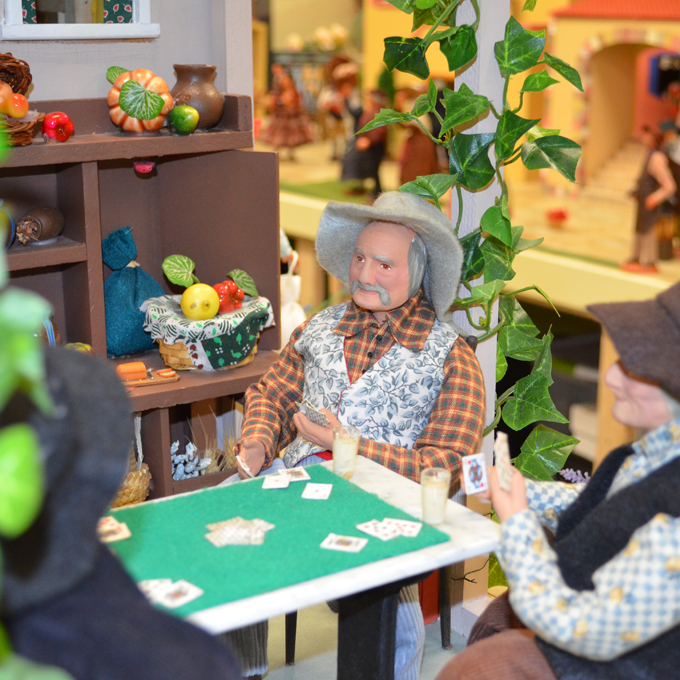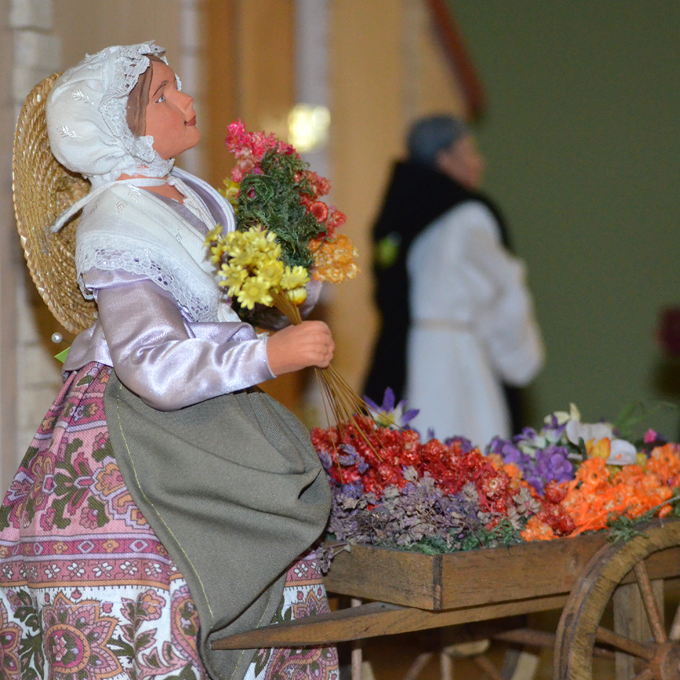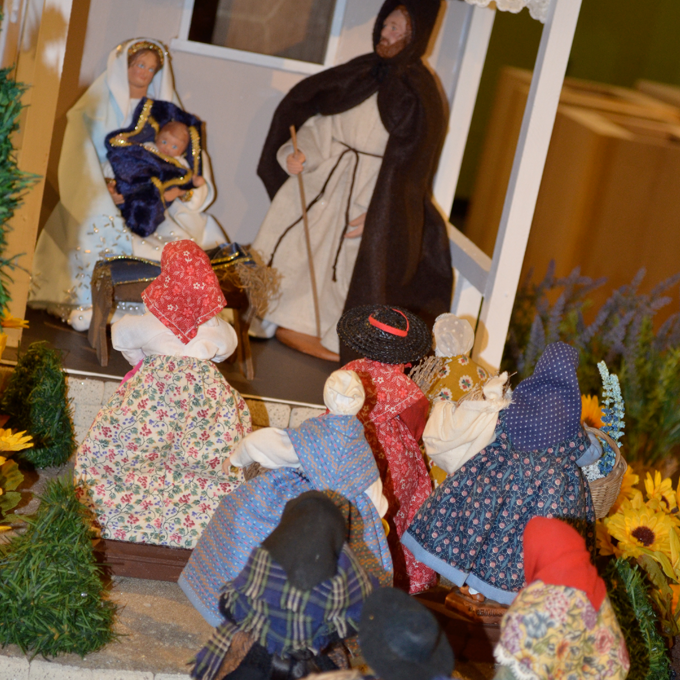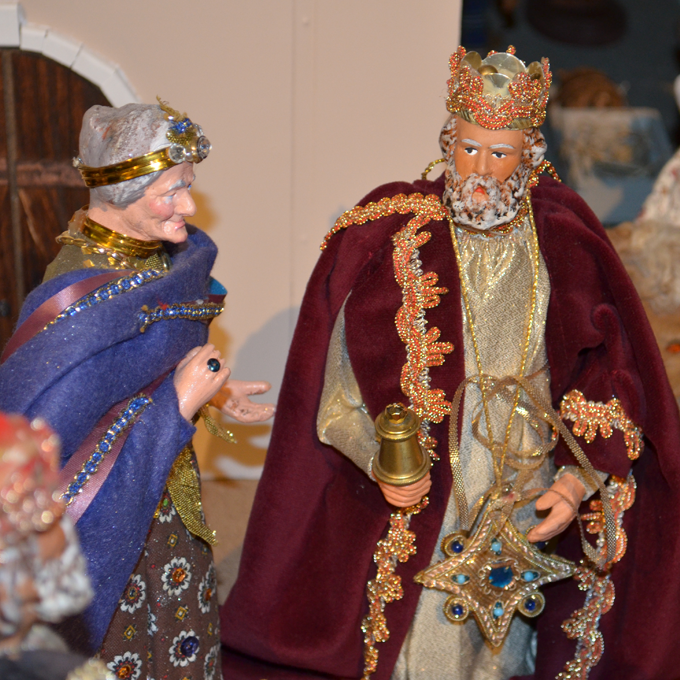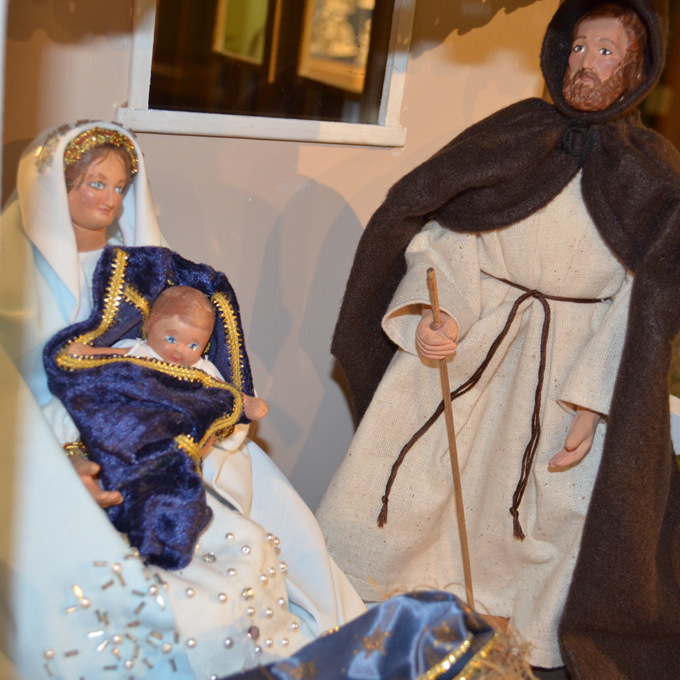Provençal Village
Provençal Village
The Provence in Southern France is known for its Santon culture. Santons, or little saints, were painted clay figures of popular saints sold by peddlers and at the weekly village market. The name Santon is now used to designate the many figures of the Provençal crèche. The figures represent the whole village, activities and people of all walks of life. This village is global because all of its people, the whole village, will eventually gather at the Manger.
Our Provençal village presents scenes of town and country: church and main street on one side; castle, vineyards and pastures on the other side. The central scene shows the Nativity. It attracts eager joy on the part of the poor and little people. The scene contrasts with the perplexed and hesitant expectation of kings and queens, and the obvious and oblivious indifference of the people at the inn.
The village was built by the Marian Library volunteers under the direction of Mike Foley. The 151 Santons are a gift from the estate of Father John LaCasse who lovingly displayed his collection of Santons at St. Joseph parish in Ida, Michigan where he was pastor from 1989 until his retirement is 2008. This collection of Santons is one of the largest in the United States.
All About Mary includes a variety of content, much of which reflects the expertise, interpretations and opinions of the individual authors and not necessarily of the Marian Library or the University of Dayton. Please share feedback or suggestions with marianlibrary@udayton.edu.

